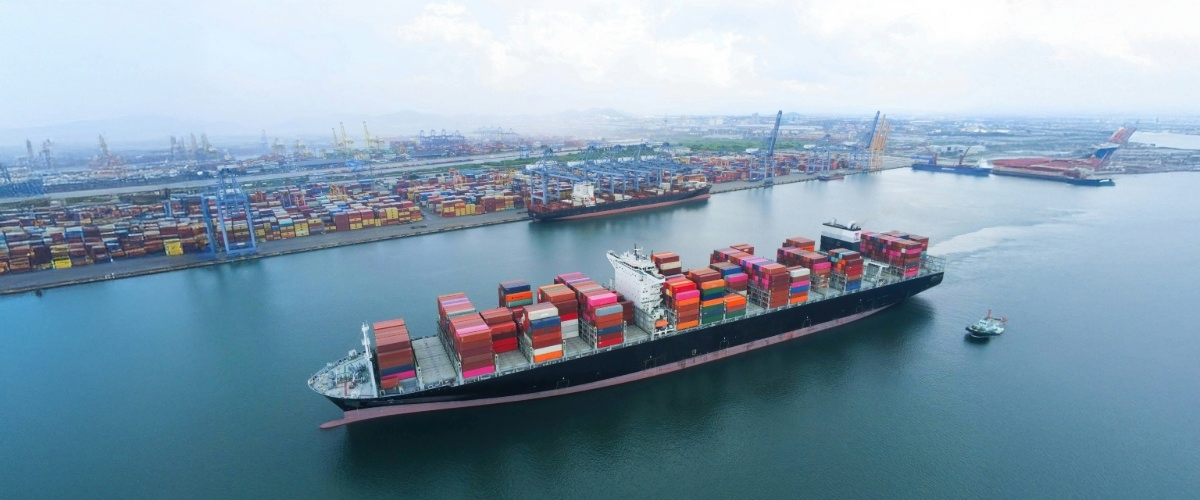The geographical spread of global supply chains has meant the involvement of several countries (and their regulations) in international trade. As manufacturing capacity continues to diversify across newer locations and as new consumption markets emerge, more and more nations get integrated into global trading networks.
At the same time, shifting trade tariffs and ongoing policy changes are reshaping cost structures, making it even more important for businesses to manage customs compliance proactively. Shipments and imported goods must comply with regulations when entering a country. Businesses that understand these requirements can ensure smoother importing, exporting, and cross-border trade.
Therefore, any international transaction could potentially span multiple jurisdictions, and the parties involved will have to ensure customs compliance with relevant local regulations. Customs compliance is crucial when exporting and importing goods, as proper procedures must be followed when sending shipments across borders to avoid penalties and ensure legal entry.
The complexity is heightened due to the fact that each country’s requirements and objectives for participating in global commerce differ significantly, depending on its state of economic development, export basket, and other commercial and political factors. Businesses face challenges in understanding and adhering to applicable laws, making it essential to have the right knowledge and resources to navigate customs compliance effectively.
For importers, exporters, and customs brokers, the implication is a surge in procedures and documentation related to customs compliance. Entry errors can result in significant risks, including penalties if duties and taxes are not paid correctly. Working with experienced experts, a dedicated compliance team, or a brokerage partner helps ensure best practices are followed throughout the importing and exporting process.
Global Trade Frameworks Govern International Trade
Each country has its own trade laws and compliance rules, but at the international level, exports follow a well-defined and uniform regulatory framework designed to simplify global trade. In addition, government offices play a crucial role in shaping trade policy and provide guidance to businesses to help them navigate these requirements.
This uniformity starts from the wider shipping process and is also prevalent in terms of documentation, policies, categorization of commodities, and more.
The transport process generally involves the exporter or their freight forwarder picking up cargo at the origin, arranging transport to the loading port, completing customs compliance formalities at the origin, and then loading on board the nominated vessel. At the destination, the process involves notifying customs and submitting the stipulated information, paying applicable import duties, and once cleared at customs, collecting the cargo and transporting it to the final destination.
Checking all documentation and starting compliance efforts early — such as by visiting official resources or using easy-to-use platforms for booking and tracking shipments — can help ensure a smooth process.
The paperwork associated with the export and import of goods is broadly similar in nature, comprising of documents such as the bill of lading, commercial invoice, packing list, certificate of origin, and letter of credit. Customs compliance not only helps businesses avoid fines and build trust, but also strengthens long-term relationships and protects their reputation.
At a granular level, the Harmonized Tariff Schedule (HTS) is an example of standardization when it comes to the classification of goods through HS code harmonization. The HTS code is a classification system used by the United States to identify goods for customs purposes, helping importers determine applicable tariffs and responsibilities for each shipment.
Given the sheer variety of traded goods and the different subcategories within each product class, it was crucial to standardize the system of classification of commodities. In 1980, the World Customs Organisation created the Harmonized Tariff Schedule (HTS), providing a common benchmark for classification.
HS code harmonization thus simplifies customs compliance by ensuring that customs, exporters, and importers have access to a common system when it comes to classifying goods and determining tariffs applicability.
For more information, visit official customs websites for guides and resources, and sign up for updates to stay informed about the latest in trade policy and compliance.
Global Trade Data More Uniform Than Commonly Perceived
Despite country-specific laws regarding customs compliance at the global level, there do exist considerable similarities in customs rules. It is estimated that over 90% of trade data elements overlap across jurisdictions.
Though countries might have mandated additional compliance steps depending on extant circumstances and economic objectives, the overall process is largely similar, due to HS code harmonization, INCO terms to determine allocation of responsibilities and liabilities, and globally accepted documentary and information requirements.
HS code harmonization has, in particular, simplified commodity classification, while opening up opportunities for the deployment of logtech solutions. Technology solutions like KlearNow.AI make compliance easy and provide resources and guides to help businesses understand requirements, ensuring they have the knowledge needed to comply with customs regulations.
Since most companies are redesigning their AI rollout strategies by taking a top-to-bottom approach, and deploying AI-powered tools globally and rolling them out to countries, HS code harmonization eliminates some of the complexities that could be potential bottlenecks. It is important to start compliance efforts with the right knowledge, understand the requirements for each place, and partner with experts who can provide support and resources throughout the process.
KlearNow Leverages Similarity To Drive Real-time Compliance
As an industry leader, KlearNow has been at the forefront of the AI revolution in the logistics and supply chain industry.
Incorporating the latest advances in AI and ML, KlearNow has focussed extensively on research to develop products that cater to a rapidly evolving industry that has, of late, been characterized by exceptional volatility.
KlearHub, its global customs control tower product, offers a comprehensive range of functionalities that empower businesses by taking total trade control. It combines real-time visibility, data digitization, IDP, and automated workflows to optimize supply chain and customs compliance activities, with a user-friendly dashboard that pulls together all your trade documents, customs data, and compliance metrics.
Book your free demo today and witness the transformative power of KlearNow.
Frequently Asked Questions (FAQs)
1. What is trade data and why is it important in international trade?
Trade data refers to the information collected and exchanged when goods move across borders, such as product details, values, origins, and destinations. Accurate trade data helps companies comply with customs requirements, calculate fees, and analyze trends. Having clean and standardized data is also a key benefit for businesses that want to optimize global operations and avoid delays.
2. What is the Harmonized Tariff Schedule (HTS) and how does the classification system work?
The Harmonized Tariff Schedule (HTS) is a standardized classification system used in international trade to identify goods for customs purposes. Each HTS code corresponds to a specific type of product, allowing customs authorities to determine the applicable duties, tariffs, and trade rules. Companies benefit from using the correct HTS code, as it ensures accurate documentation and prevents costly compliance errors.
3. What documentation is required for international trade compliance?
The required documentation for importing or exporting goods usually includes the bill of lading, commercial invoice, packing list, certificate of origin, and sometimes a letter of credit. These documents are essential for customs clearance, as they verify product classification, HTS codes, and associated fees. Using digital tools to manage required documentation can simplify the process for companies and reduce errors.
4. What are the benefits of using tools for customs compliance and trade data management?
Modern tools powered by AI and automation help companies streamline customs compliance by digitizing trade data, classifying goods with the right HTS codes, and automatically generating required documentation. The benefits include faster clearance, reduced fees, and better visibility into international trade processes. Tools also support companies in maintaining long-term compliance and building stronger supply chain resilience.
5. How do companies ensure accurate classification and avoid extra fees in international trade?
Companies ensure accuracy by using the harmonized tariff schedule and assigning the correct HTS code to every shipment. Misclassification can lead to higher fees, penalties, or shipment delays. Many companies now rely on AI-driven tools and expert partners to validate classification data, manage documentation, and unlock the full benefits of efficient customs compliance.

